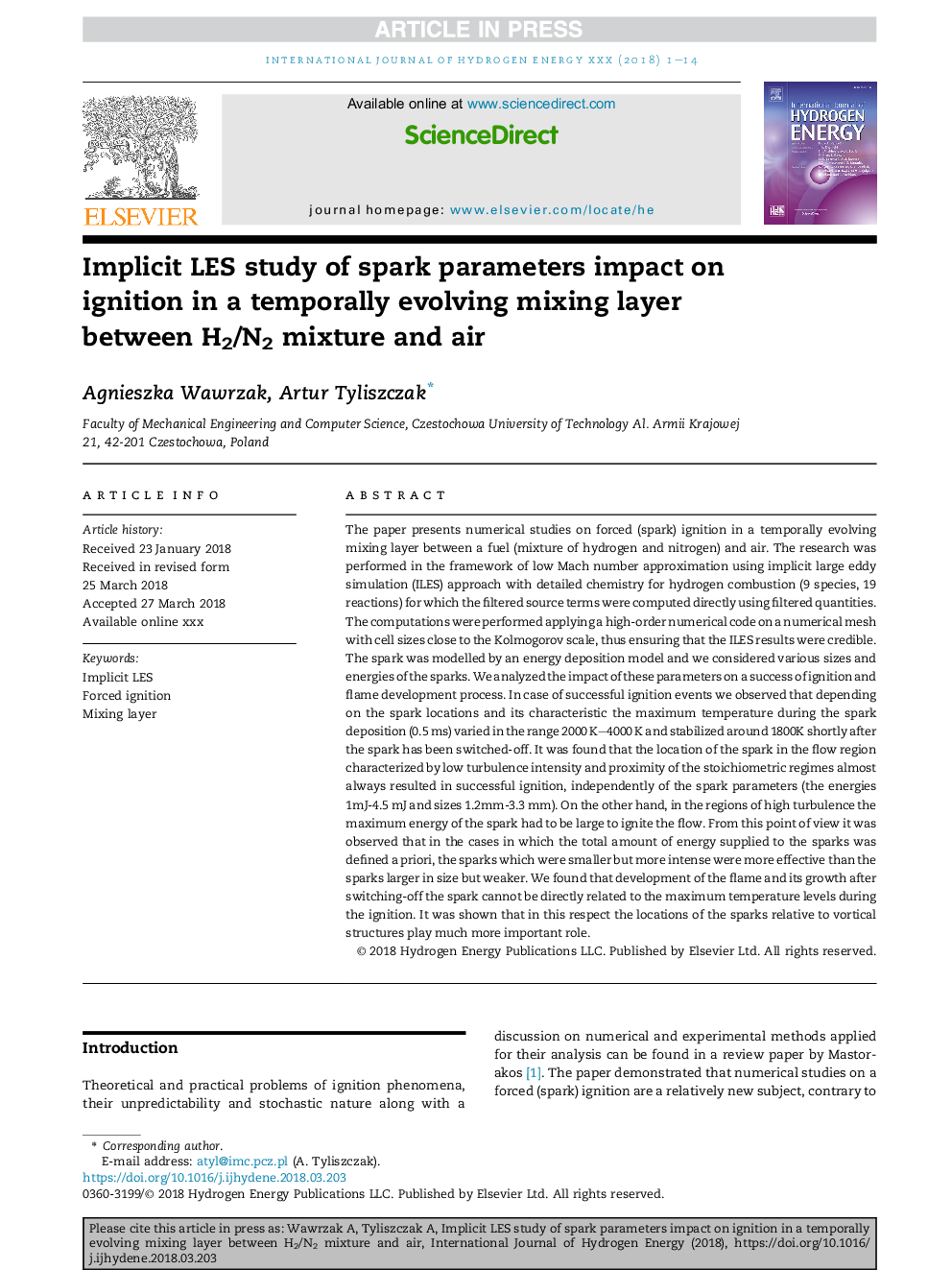| کد مقاله | کد نشریه | سال انتشار | مقاله انگلیسی | نسخه تمام متن |
|---|---|---|---|---|
| 7706137 | 1497305 | 2018 | 14 صفحه PDF | دانلود رایگان |
عنوان انگلیسی مقاله ISI
Implicit LES study of spark parameters impact on ignition in a temporally evolving mixing layer between H2/N2 mixture and air
دانلود مقاله + سفارش ترجمه
دانلود مقاله ISI انگلیسی
رایگان برای ایرانیان
کلمات کلیدی
موضوعات مرتبط
مهندسی و علوم پایه
شیمی
الکتروشیمی
پیش نمایش صفحه اول مقاله

چکیده انگلیسی
The paper presents numerical studies on forced (spark) ignition in a temporally evolving mixing layer between a fuel (mixture of hydrogen and nitrogen) and air. The research was performed in the framework of low Mach number approximation using implicit large eddy simulation (ILES) approach with detailed chemistry for hydrogen combustion (9 species, 19 reactions) for which the filtered source terms were computed directly using filtered quantities. The computations were performed applying a high-order numerical code on a numerical mesh with cell sizes close to the Kolmogorov scale, thus ensuring that the ILES results were credible. The spark was modelled by an energy deposition model and we considered various sizes and energies of the sparks. We analyzed the impact of these parameters on a success of ignition and flame development process. In case of successful ignition events we observed that depending on the spark locations and its characteristic the maximum temperature during the spark deposition (0.5Â ms) varied in the range 2000Â K4000Â K and stabilized around 1800K shortly after the spark has been switched-off. It was found that the location of the spark in the flow region characterized by low turbulence intensity and proximity of the stoichiometric regimes almost always resulted in successful ignition, independently of the spark parameters (the energies 1mJ-4.5Â mJ and sizes 1.2mm-3.3Â mm). On the other hand, in the regions of high turbulence the maximum energy of the spark had to be large to ignite the flow. From this point of view it was observed that in the cases in which the total amount of energy supplied to the sparks was defined a priori, the sparks which were smaller but more intense were more effective than the sparks larger in size but weaker. We found that development of the flame and its growth after switching-off the spark cannot be directly related to the maximum temperature levels during the ignition. It was shown that in this respect the locations of the sparks relative to vortical structures play much more important role.
ناشر
Database: Elsevier - ScienceDirect (ساینس دایرکت)
Journal: International Journal of Hydrogen Energy - Volume 43, Issue 20, 17 May 2018, Pages 9815-9828
Journal: International Journal of Hydrogen Energy - Volume 43, Issue 20, 17 May 2018, Pages 9815-9828
نویسندگان
Agnieszka Wawrzak, Artur Tyliszczak,